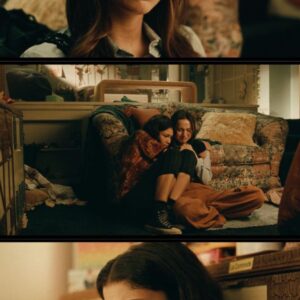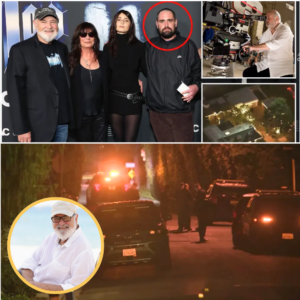As the leaves turn crimson in the Midwest’s eternal autumn, Netflix unleashes its most macabre chapter yet: Monster: The Ed Gein Story, the third installment in Ryan Murphy and Ian Brennan’s Emmy-nominated anthology series. Premiering today, October 3, 2025, this eight-episode fever dream catapults viewers into the frostbitten fields of 1950s Plainfield, Wisconsin, where a soft-spoken handyman named Ed Gein—brought to grotesque life by Charlie Hunnam—unravels into America’s original boogeyman. Forget the procedural detachment of Mindhunter or the familial implosion of Monsters: The Lyle and Erik Menendez Story; this is Murphy at his operatic best, a visceral autopsy of the soul that probes not just the crimes, but the cultural rot that birthed them. With Hunnam’s haunted gaze piercing the screen like a grave-digger’s shovel, the series doesn’t merely recount Gein’s atrocities—it resurrects them, forcing us to confront the monster in the mirror. In a streaming landscape starved for true terror, The Ed Gein Story isn’t entertainment; it’s an exorcism, streaming now to remind us that some horrors never truly die.
The Monster franchise has always thrived on the tension between spectacle and scrutiny, transforming infamous killers into tragic antiheroes while indicting the societies that enabled them. Season one, Dahmer – Monster: The Jeffrey Dahmer Story, devoured 856 million hours in 2022, its unflinching gaze on Milwaukee’s systemic failures earning Niecy Nash-Betts a Golden Globe. Season two dissected the Menendez brothers’ gilded cage, humanizing fratricide amid abuse allegations and pulling 167 million views. But Gein? He’s the primordial ooze from which modern horror slithered— the grave-robbing ghoul whose lampshades of flesh and “mama suits” stitched from women’s skin inspired Norman Bates’ shower-stabbing psyche in Psycho, Leatherface’s chainsaw ballet in The Texas Chain Saw Massacre, and Buffalo Bill’s dermal dances in The Silence of the Lambs. Murphy, ever the showman with a scalpel, frames Gein’s tale as “the original monster,” a cautionary opera on how isolation, fanaticism, and postwar denial forged a fiend. “Ed wasn’t born evil,” Murphy teased in a recent Tudum interview. “He was assembled—piece by flayed piece—by the world that forgot him.” It’s a thesis that elevates the anthology beyond true-crime voyeurism into a mirror for America’s unspoken cruelties, where the picket fence hides horrors sharper than any razor.
The narrative unfurls like a exhumed diary, chronicling Gein’s quiet corrosion from 1944 to the 1960s, a timeline that captures the Midwest’s facade of normalcy cracking under repressed desires. We first encounter Ed as a 38-year-old oddity, tending his sagging family farm with the deference of a whipped dog, his days a monotonous blur of hardware store odd jobs and neighborly nods. To Plainfield’s insular burghers, he’s harmless Eddie— the bachelor who fixes fences for widows and mumbles prayers at Methodist services. But beneath the floorboards of his ramshackle homestead festers a shrine to his late mother, Augusta (Laurie Metcalf, unleashing a venomous piety that rivals her Roseanne matriarchs), whose death in 1945 unleashes Ed’s subterranean urges. Nocturnal raids on local cemeteries become his ritual: exhuming fresh graves of middle-aged women, dragging their stiffened forms through moonlit snow to his kitchen table for profane “resurrections.” The series builds inexorably to the flashpoint of November 16, 1957, when Deputy Frank Worden (Charlie Hall, his boyish resolve fracturing like thin ice) discovers hardware store owner Bernice Worden (Lesley Manville, her final hours a portrait of trusting fatalism) decapitated and gutted in Gein’s shed, her blood pooling like spilled molasses.
What ensues is a forensic phantasmagoria: sheriffs unearthing a menagerie of macabre relics—shrunken heads dangling from bedposts, a belt of carved nipples, soup bowls fashioned from craniums, and masks flayed from faces that Ed dons in fevered dances before his mother’s portrait. Murphy’s signature flourishes abound: hallucinatory interludes where Ed’s psyche fractures into vaudeville vignettes, his victims’ ghosts crooning show tunes from beyond the veil. Flash-forwards weave in Gein’s cinematic progeny—Alfred Hitchcock (Tom Hollander, his urbane chill curdling into obsession) poring over case files mid-Psycho production, debating with wife Alma Reville (Olivia Williams) how to alchemize real depravity into reel psychosis; a spectral Tobe Hooper (Will Brill) channeling the “mama suit” into 1974’s chainsaw frenzy. These meta-tendrils underscore the series’ meta-theme: how Gein’s infamy metastasized into Hollywood’s horror genome, romanticizing deviance while pathologizing the vulnerable. In one gut-wrenching sequence, Ed—deemed unfit for trial and confined to Central State Hospital—confides in Dr. Mildred Newman (Vicky Krieps, her clinical poise masking empathetic horror), his stammered litany of “Mama said no” peeling back layers of Oedipal repression. It’s here that Monster transcends gore for Freudian excavation: Ed’s fixation on “becoming” women a grotesque bid for maternal merger, echoing the era’s puritanical chokehold on sexuality.
Charlie Hunnam, the rugged Jax Teller of Sons of Anarchy fame, undergoes a metamorphic masterclass that cements his pivot from action antihero to psychological alchemist. At 45, he sheds 30 pounds to embody Gein’s emaciated wisp—cheeks hollowed, frame stooped like a wind-scoured willow—his once-broad shoulders now a fragile scaffold for madness. “I wanted to inhabit him completely,” Hunnam revealed in a New York Times profile, his voice cracking with residual immersion. “Ed wasn’t a snarling beast; he was a whisperer, a shadow slipping through the cracks. Playing him meant excavating my own silences—the places where isolation festers.” Directors, led by Max Winkler (helming six episodes), recount Hunnam’s method as both heroic and harrowing: arriving on Chicago’s subzero exteriors shivering in threadbare flannel, rehearsing Gein’s halting cadence amid blizzards that mirrored Plainfield’s emotional tundra. “What the f— did you do to yourself?” Winkler gasped upon glimpsing Hunnam’s skeletal form, a moment of awe that infused the footage with raw authenticity. Hunnam’s Ed is a symphony of restraint: eyes darting like cornered prey, hands twitching with unspoken hungers, his rare smiles blooming like fungi on rot. A pivotal dance sequence—Ed twirling in a pilfered dress before flickering candlelight—drips with tragic eroticism, Hunnam’s lithe grace twisting into something profoundly unsettling. Post-filming, Hunnam sought closure at Gein’s Plainfield gravesite, whispering an apology to the headstone: “I tried to understand you, mate. Hope I did you justice.” It’s a performance that demands revulsion and reluctant pity, forcing viewers to grapple with the banality of budding evil.
The ensemble swirls around Hunnam like moths to a funeral pyre, each illuminating facets of Gein’s fractured cosmos. Laurie Metcalf channels Augusta as a biblical harpy—equal parts fire-breathing prophetess and emotional embalmer—her spectral hauntings post-mortem a tour de force of pious predation that eclipses Jessica Lange’s American Horror Story divas. “Augusta didn’t raise Ed; she interred him alive,” Metcalf mused, her portrayal a venomous vortex of control. Suzanna Son slithers in as Adeline, Ed’s sole confidante and oblique enabler, her wide-eyed complicity adding layers of queer-tinged unease. Tom Hollander and Olivia Williams dissect the Hitchcocks with wry precision: his droll fixation on Gein’s “artistry” birthing Psycho‘s shower slaughter, her steely counsel tempering the frenzy. Grounding the grotesquerie are Lesley Manville’s doomed Bernice, her small-town candor betrayed in a heartbeat; Charlie Hall’s Deputy Worden, whose investigation spirals into suicidal despair; and Tyler Jacob Moore’s Sheriff Art Schley, exposing the badges’ institutional blindness. Rookies like Addison Rae (as babysitter Evelyn Hartley, one of Gein’s alleged victims) inject fresh dread—her torment in a trailer sequence a viral gut-punch—while veterans Mimi Kennedy, Will Brill, and Robin Weigert flesh out the periphery: gossipy neighbors, skeptical shrinks, and opportunistic reporters. Even Joey Pollari’s Anthony Perkins gets a meta nod, his on-set jitters foreshadowing Psycho‘s iconic scream.
Production was a Sisyphean siege, spanning five punishing months from February to June 2025 across Vancouver’s sodden pines (standing in for Wisconsin’s woods) and Los Angeles soundstages shrouded in fog and faux frost. Murphy and Brennan, through their Ryan Murphy Productions banner, reunited with executive producers Max Winkler, Eric Kovtun, and Scott Robertson, funneling a $120 million war chest—rivaling Dahmer‘s feast—into ethical horrors: props mimicking Gein’s artifacts crafted from latex and silicone by forensic artisans, dialect coaches drilling the flat Midwestern monotone, and sensitivity consultants navigating the era’s mental health taboos. Winkler, drawing from his indie roots in Flower and On the Count of Three, infused intimacy amid the gloss, lingering on quiet creaks and newsprint rustles before the reveals. “Ryan gave us freedom to breathe in the banal—the creak of isolation—before the blood,” he noted. Murphy’s hallmarks permeate: lavish soundscapes (Nick Cave crooning over autopsy slides), operatic slow-motion eviscerations, and sly American Horror Story winks. Yet this Monster reins in the flamboyance for archival fidelity—court transcripts, psych evals—to honor victims like Mary Hogan (disappeared 1952) and Bernice, whose descendants consulted on set for dignity amid depravity. Hunnam exec-produced, his investment a bulwark against exploitation: “We owed them truth, not titillation.”
What distinguishes The Ed Gein Story from Mindhunter‘s detached dissections is its intimate indictment. Jonathan Groff’s Holden Ford probed killers clinically; Hunnam’s Gein bleeds frailty, his confessions a fractured psalm indicting 1950s failures: rural penury masking schizophrenia, Freudian quackery over real therapy, a culture fetishizing the nuclear hearth while ignoring its fractures. Postwar prosperity’s underbelly yawns wide—Levittown dreams recoiling at Gein’s exposed viscera, a reminder that abundance breeds alienation. The series indicts media sensationalism too: the Milwaukee Journal‘s “Mad Butcher” headlines birthing true-crime’s voracious maw, still feasting on Netflix’s dime. Critics’ early peeks hail it as Murphy’s ripest fruit, a “Hitchcockian heart of darkness” grappling monstrosity’s roots without absolution. “Not glorifying the ghoul,” an insider confides; “exhuming why we exhume him.”
Streaming today, the internet’s morbid murmur crescendos. Trailers—Hunnam’s vacant stare amid blood-smeared farmhouses—have tallied 75 million views, birthing TikTok dissections of Gein’s “wardrobe” and Reddit dives into his unfilmed Hitchcock biopic. Fans, scarred by Dahmer‘s ethics quake, brace for retreading: Will it retraumatize Plainfield’s kin, or empower via reckoning? Hunnam, promo-weary with hollowed cheeks, demurs: “Ed haunts because he’s us—the dark we nurture, awaiting storm.” In a glut of jump-scare slop, Monster: The Ed Gein Story offers rarer dread: horror that haunts the hush thereafter. Plainfield’s phantoms stir; tonight, they seize the stream. Sweet dreams, America—the skin suit awaits.

